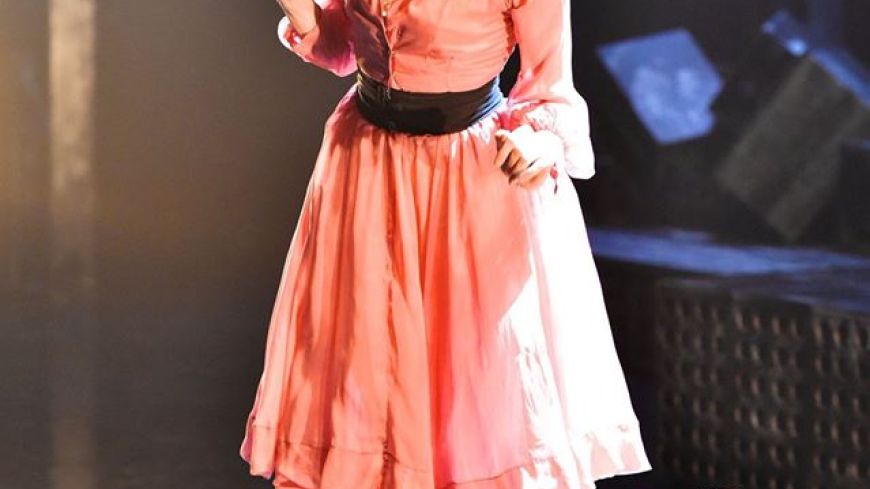
"A Streetcar Named Desire is just incredible, like watching a film, musical, play and ballet all at once!”
So commented a theatre-goer after seeing the premiere by Scottish Ballet in 2012. Since then the production has wowed audiences around the UK and the USA, receiving outstanding reviews and major choreography awards.
"A Streetcar Named Desire", the Pulitzer Prize winning 1947 play by Tennessee Williams, ran on Broadway for two years before opening in London starring Vivien Leigh as the femme fatale, Blanche DuBois. Leigh won an Oscar for the role in the 1951 movie co-starring Marlon Brando as Stanley.
As an intimate portrait of women’s lives and loves in post-war American society, it’s the ideal dramatic narrative for Scottish Ballet. Director, Nancy Meckler had never worked with dancers before, but specialises in theatre classics, (Shakespeare, Shaw, Albee and Shepherd et. al), took on the challenge, collaborating with Colombo-Belgian choreographer Annabelle Lopez Ochoa and the composer Peter Salem, renowned for theatre, dance, TV and film scores.
Adapting the play into movement, mime and music, it was important to ensure clarity of plot and characterisation. Hence, the opening scenes set in the mid 1930s show the wealthy family life of Blanche DuBois and her younger sister Stella.
This neat series of vignettes are elegantly dramatised: Belle Reve, the grand Plantation house is the backdrop for Blanche and Alan’s wedding with lively dancing to a country music beat and foot-tapping Irish jigs.
As Blanche, the slender, graceful Eve Mutso is dressed in a virginal-white lacy frock, her blonde hair chignon-style. Grace Kelly to a T. A glamorous socialite, she clings possessively to Alan, as the party-goers join in a free-spirited polka amidst a colourful display of purple and red hats and gowns.
But soon, bereavements, financial problems and personal tragedy completely destroy Blanche’s dream of a happy marriage which she has long romanticised. Now a tragic, penniless widow, she has lost everything of worth, her self-esteem in tatters.
Like women of her generation, she relies on men, their care, embrace, love, for emotional strength; it’s as if she cannot breathe without sexual contact and depends on "the comfort of strangers". With a thin veneer of vulnerability, Mutso captures this solitary, lost soul of a social butterfly, perfectly.
Stella now lives in New Orleans married to Stanley Kowalski, a bit of a rough diamond, but she has fallen for his macho charm. With the clanging of streetcar-tram bells, the scene shifts to a seedy downtown nightclub with the raunchy, racy sound of jazz.
Escaping to find a new life, Blanche arrives at the Kowalski’s cramped apartment with a large suitcase of glamorous clothes. Stanley (Erik Cavallari), casually dressed in jeans and vest, portrays a bullying, bullish and chauvinistic attitude towards women, even to his wife Stella.
He is clearly not fooled by Blanche’s frail femininity and openly derides her social snobbery and flighty, promiscuous behaviour. Their personalities clash head on. Her only crutch is strong drink, hiding bottles amongst her clothes, taking a regular swig to calm her nerves.
The superlative bluesy score drives the menacing mood along in period style. The Ella/Frankie classic, "It's Only a Paper Moon” is played on the radio as Stella dances seductively with Stanley’s friend, Mitch.
Meanwhile the intensity of Stanley and Stella’s relationship is observed in a wildly erotic duet; beautifully choreographed and precisely partnered, the tiny, delicate figure of Sophie Martin is like a rag doll in her husband’s arms, dominating and demanding in his physical desire.
Lighting is subtle yet extremely effective, denoting both the steamy heat and the atmosphere of the Kowalski’s claustrophobic apartment where bare bulbs cast shifting shadows. Swift set changes move the action along with minimal staging.
The central focal point in “A Streetcar Named Desire” is Blanche as we follow her personal journey from carefree, young Southern Belle to a bruised and broken-hearted alcoholic woman.
In a breathtaking performance, Mutso dramatises Blanche’s inner torment through a composed stillness, eyes wide open and her sensual figure moving with flirtatious spirit and dream-like grace.
It is quite uncanny that even without any of Williams’ poetic, passionate words spoken, you can almost hear her growing despair - “ I don't want realism. I want magic!” she seems to shriek, silently.
To have re-created the power and emotion of this classic American play into 100 minutes of contemporary dance is an extraordinary artistic achievement. I cannot describe it better myself - the performance is “ like watching a film, musical, play and ballet all at once!”
Tour
Festival Theatre, Edinburgh, 18-21 March, 2015;
Sadlers Wells, London, 31 March-2 April, 2016
USA Tour -
CHICAGO
Harris Theater -
7 – Sat 9 May 2015
SAN ANTONIO
Tobin Center – 12 May 2015
HOUSTON
Brown Theater – 15 May 2015
PITTSBURGH
Byham Theater – 19 May 2015
CHARLESTON
Spoleto Festival College of Charleston Sottile Theatre
22 – 24 May 2015
WASHINGTON DC
Kennedy Center – 28 – Sat May 2015

